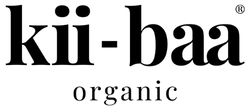It's no secret that for hair to be healthy and grow fast, it needs a balance of moisture and protein, so we need to care of the hair of our little ones just as we do our own.

WHAT IS KERATIN?
Every strand of hair is made up of amino acid and protein chains, particularly a durable protein called Keratin, which is also found in bird feathers, cat claws, and horse hooves.
Keratin is a fibrous protein that helps maintain the hair elasticity and keeps it healthy and strong. The keratin content of hair is approximately 90% and is therefore, without exaggeration, its main building material and scaffolding all in one. It can be found both on the surface of the hair as well as inside.
The photo below shows the architecture of the hair shaft. This is what a cross-section of healthy hair looks like.

The natural protective layer, a kind of protective wall, is the hair cuticle. It typically consists of 5-7 overlapping colourless layers — scales— called cuticles. This protective layer is extremely durable and resilient.
However, this perfect hair structure, even in our little ones, often takes on damage. In our daily lives our hair is stressed in many ways. The hair surface is stressed by common mechanical activities such as towelling, brushing, combing, and drying. However, our hair is also negatively affected by environmental elements such as the sun, wind, pollution, water quality, and so on.
When our hair is exposed to these common stressors, our natural hair proteins break down in the hair, causing gaps and holes in the hair cuticle/cortex. This can easily lead to hair damage, resulting in a rough and brittle surface, split ends, and loss of shine.
Once the hair shows similar loss and damage, a plant-based protein can replenish the missing material. The key to maintaining optimal hair health is therefore adding protein to your hair care as a preventive measure.
HOW DOES PLANT-BASED PROTEIN WORK?
Plant-based protein repairs and strengthens hair, reduces its brittleness and strengthens it so that it regains elasticity. It also helps revitalise fine hair, increases its density, and promotes faster growth.
The process works by attaching hydrolysed, plant-based proteins to the hair cuticle to fill in the gaps created. The figure on the left shows the protein (blue) helping to seal the "holes" left by damaged cuticles. The figure on the right shows how the protein protects the hair surface by forming a thin film that acts as a barrier around the entire hair shaft, strengthening the hair and protecting it from further damage.

And how does the added protein hold on the hair? Quite simply, its slight positive electric charge is attracted to the slightly negative charge of damaged parts. So, the protein attaches to damaged parts quite naturally.
WHY CHOOSE A SWEET ALMOND PROTEIN?
Hydrolysed sweet almond protein is a split plant protein obtained by hydrolysis of sweet almond kernel protein. For their high content of nutrients, vitamins and minerals, almonds are also considered a superfood. Almonds are rich in vitamin E, Omega 3 and 6, fatty acids, magnesium, and biotin, among others. They’re also one of nature’s richest sources of protein, so hair care products containing almond extracts help keep keratin levels high and hair in optimal condition.
In addition, the almond protein on the hair reduces static electricity and acts as a hair conditioner, which enhances the hair structure and ensures easy combing. It leaves hair smooth, soft, and shiny. This great protein also absorbs free radicals, protects the hair surface, has a high antioxidant capacity, and reduces copper binding. Read more about copper and hair here.
Moreover, the almond protein used in kii-baa® organic care is biocompatible according to both Certified Natural Cosmetics and COSMOS standards.
